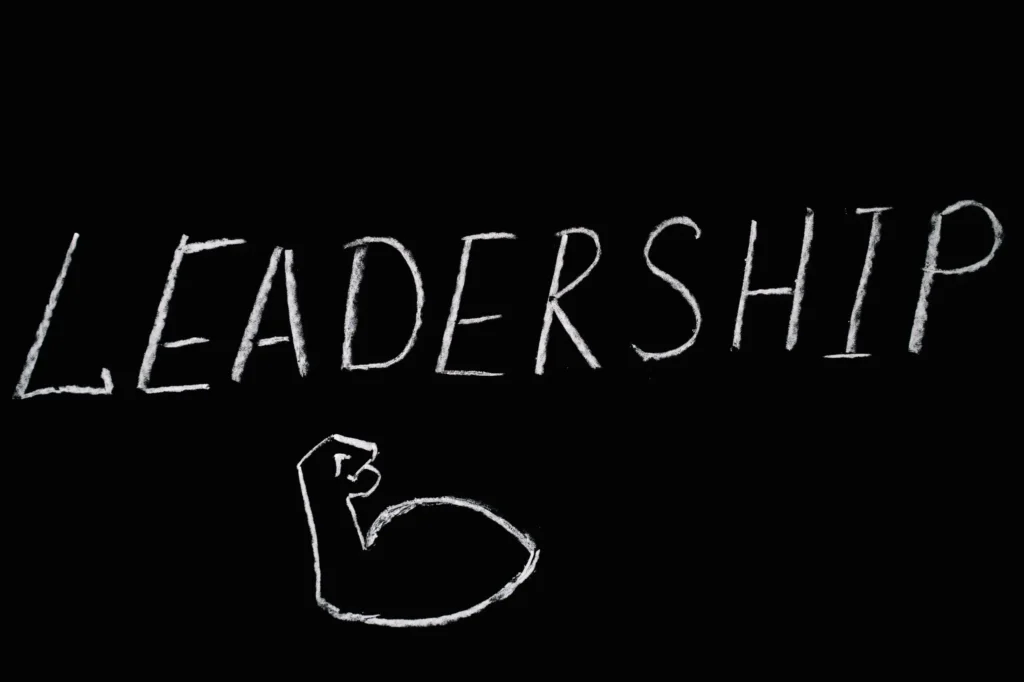Learning how to be a good leader is a fundamental skill for anyone in a position of authority. Effective leadership is not just about issuing orders and expecting them to be followed; it’s about inspiring and motivating a team to achieve common goals.
Whether you’re leading a small team or an entire organization, understanding the principles of good leadership can significantly impact your success. In this comprehensive guide, we’ll delve into the essence of leadership, what it takes to be a good leader, and how to cultivate these crucial qualities within yourself and others.
What Is Leadership?
Before diving into the specifics of how to be a good leader, it’s essential to understand what leadership truly entails. At its core, leadership is the art of guiding and influencing others to achieve a shared objective. This involves providing a clear direction, setting expectations, and fostering a conducive environment for growth and productivity.
Clarify Leadership Roles and Expectations
Clarifying roles and expectations is a vital aspect of effective leadership. By defining roles clearly, each team member understands their responsibilities, which ultimately contributes to the overall success of the group.
What Good Leadership Looks Like
Good leadership manifests through a combination of various essential qualities. These qualities not only inspire others but also create a positive work environment conducive to growth and productivity. Let’s explore some of the key qualities that define a good leader:
Essential Leadership Qualities
A good leader encompasses an array of fundamental qualities that set the foundation for successful leadership:
Integrity
Integrity forms the bedrock of trust. A leader with unwavering integrity earns the trust and respect of their team, fostering a culture of transparency and honesty. Without integrity, a leader’s decisions and actions lack credibility, leading to a breakdown in trust and morale within the team.
Delegation
Effective leaders understand the importance of delegation. Delegating tasks empowers team members, fosters skill development, and encourages a sense of ownership.
However, it’s crucial for leaders to delegate tasks effectively, considering the strengths and weaknesses of each team member, to ensure the successful completion of tasks while nurturing individual growth.
Communication
Clear and open communication is crucial for effective leadership. Leaders who can convey their vision and expectations effectively are better equipped to guide their team toward success.
Communication is not just about relaying information; it’s about actively listening to team members, providing constructive feedback, and fostering an environment where everyone feels heard and valued.
Self-Awareness
Self-awareness allows leaders to understand their strengths and weaknesses, enabling them to make informed decisions and continually strive for self-improvement.
Leaders who lack self-awareness may struggle to understand their impact on the team and the organization, leading to ineffective decision-making and a lack of personal growth.
Gratitude

Acknowledging and appreciating the efforts of team members fosters a positive and motivated work environment, encouraging continued dedication and hard work.
Gratitude goes beyond just saying “thank you.” It involves recognizing the specific contributions of team members and expressing genuine appreciation for their hard work and dedication.
| Effects of Gratitude on Team Morale | Effects of Gratitude on Productivity |
|---|---|
| Improved motivation and satisfaction | Increased dedication and commitment |
| Stronger sense of camaraderie | Enhanced team cohesion and collaboration |
Learning Agility
A good leader recognizes the value of continuous learning. Embracing new ideas and adapting to change helps leaders stay ahead in an ever-evolving business landscape.
Learning agility enables leaders to keep up with industry trends, technological advancements, and changing market dynamics, allowing them to make informed decisions and drive innovation within their teams.
Influence
Leaders with strong influence can inspire their teams to achieve their best. By setting a positive example, leaders can influence their team’s behavior and work ethic.
| Examples of Influential Leaders | Impact on Organizations |
|---|---|
| Steve Jobs – Apple | Innovation and cultural transformation |
| Sheryl Sandberg – Facebook | Empowerment and gender equality |
| Elon Musk – Tesla, SpaceX | Technological innovation and sustainable development |
Empathy
Empathetic leaders understand and consider the emotions and perspectives of their team members. This fosters trust and cultivates a supportive work environment.
| Benefits of Empathy in Leadership |
|---|
| Improved employee satisfaction |
| Enhanced team collaboration |
| Reduced turnover rates |
| Stronger sense of belonging |
Courage
Courageous leaders are not afraid to take calculated risks. They encourage their team to think outside the box and approach challenges with a fearless attitude. Courage is essential to navigating uncertainty and driving innovation within an organization.
Respect
Respect is fundamental to effective leadership. Leaders who respect their team members’ contributions and opinions foster a culture of mutual respect and cooperation.
| Impact of Respect on Employee Morale | Benefits of Respect in Team Dynamics |
|---|---|
| Increased job satisfaction and loyalty | Enhanced collaboration and teamwork |
| Improved employee engagement | Higher levels of trust and support |
Transparency
Transparency builds trust within the team. Leaders who are transparent with their decisions and strategies create a sense of inclusion and credibility.
| Benefits of Transparency in Leadership |
|---|
| Improved employee engagement |
| Strengthened organizational culture |
| Enhanced trust and collaboration |
| Increased accountability and morale |
Compassion
Compassionate leaders understand the personal struggles of their team members and provide support when needed. This helps create a nurturing and understanding work environment.
| The importance of Compassion in Leadership |
|---|
| Fosters a sense of empathy and support |
| Builds trust and rapport within the team |
| Promotes well-being and job satisfaction |
| Enhances employee retention and loyalty |
Inspirational
Inspirational leaders have the ability to motivate and drive their team toward a shared vision. They instill a sense of purpose and passion in their team members.
| Examples of Inspirational Leaders | Impact on Organizations |
|---|---|
| Mahatma Gandhi – Indian Independence Movement | Social change and empowerment |
| Nelson Mandela – Anti-Apartheid Activist | Unity and reconciliation |
| Malala Yousafzai – Education Activist | Global advocacy and empowerment |
Humble
Humble leaders recognize the contributions of their team members and acknowledge that success is a collective effort. This cultivates a culture of humility and teamwork.
| Benefits of Humility in Leadership |
|---|
| Enhanced team collaboration and synergy |
| Builds trust and mutual respect |
| Fosters a supportive and inclusive work environment |
| Encourages open communication and feedback |
Forward-thinking

Forward-thinking leaders anticipate future challenges and opportunities. They encourage innovation and strategic planning to ensure the team remains competitive.
| Advantages of Forward-Thinking Leadership |
|---|
| Improved market adaptability |
| Fostered innovation and creative problem-solving |
| Enhanced long-term organizational success |
| Sustainable business growth and development |
Decisive
Decisive leaders can make prompt, well-informed decisions, ensuring the team progresses efficiently without unnecessary delays or setbacks.
| Benefits of Decisiveness in Leadership |
|---|
| Improved organizational efficiency |
| Enhanced productivity and performance |
| Streamlined decision-making processes |
| Clear direction and goal achievement |
>>>Read about the Ultimate Guide To Camping Alone in 2024<<<
Why is it important to be a good leader?
The significance of good leadership cannot be overstated. A good leader sets the tone for an entire organization, influencing its culture, morale, and overall performance.
Effective leadership fosters trust, unity, and productivity within a team, leading to increased job satisfaction and organizational success. It also ensures that company goals are aligned with the efforts of the team, resulting in a more streamlined and efficient workflow.
Benefits of being a good leader
Being a good leader brings several benefits, not only for the leader but also for the entire team and organization:
Motivates employees to improve
Effective leadership motivates employees to continuously improve their skills and contribute to the overall success of the organization.
When employees are motivated and inspired by their leaders, they are more likely to invest their time and energy in their work, leading to improved productivity and job satisfaction.
Increases unity between company goals and employees
Good leadership ensures that every team member understands the company’s objectives and is actively working toward achieving them, fostering a sense of unity and common purpose.
When employees feel aligned with the organization’s goals and vision, they are more invested in their work and are motivated to contribute to the collective success of the company.
Instills confidence in employees
A good leader instills confidence in their team, encouraging them to take on challenges and excel in their roles.
When employees feel confident in their abilities and supported by their leaders, they are more likely to demonstrate initiative and creativity in their work, leading to improved performance and a stronger sense of fulfillment in their roles.
Creates a positive workplace culture
Positive leadership fosters a supportive and encouraging workplace culture, leading to higher employee satisfaction and retention.
When employees feel valued, respected, and supported by their leaders, they are more engaged and committed to their work, leading to a positive work environment that promotes collaboration, innovation, and overall well-being.
Develop The Characteristics of a Good Leader In Yourself & Others
You want to know how to be a good leader? You should definitely key into our core beliefs about leadership and development.
Our 3 Core Beliefs About Leadership & Leadership Development
- Good leaders are made, not born.
- Collaboration builds stronger leaders.
- Good leadership never stops.
How To Be A Good Leader
Becoming a good leader involves actively cultivating and practicing essential leadership qualities. Here are some key strategies to develop and enhance your leadership skills:
1. Engage in honest, open communication.
Effective leaders prioritize open and honest communication with their team members, fostering trust and transparency within the organization. By encouraging open dialogue and active listening, leaders can build stronger relationships with their team and create a culture of open communication and feedback.
2. Connect with your team members:
Building strong connections with team members is essential for effective leadership. By taking the time to understand each team member’s strengths, weaknesses, and personal goals, leaders can foster a supportive and inclusive work environment that encourages collaboration, trust, and mutual respect.
3. Encourage personal and professional growth:
Supporting the personal and professional growth of team members is crucial for cultivating a talented and motivated workforce. By providing opportunities for training, skill development, and career advancement, leaders can empower their team to reach their full potential and contribute to the organization’s long-term success.
4. Keep a positive attitude:
Maintaining a positive attitude is essential for effective leadership. By approaching challenges with optimism and resilience, leaders can inspire their team to overcome obstacles and strive for excellence. A positive attitude is contagious and can foster a culture of optimism and determination within the organization.
5. Teach employees instead of giving orders:
Effective leaders prioritize mentorship and guidance, empowering their team members to learn and grow through hands-on experience and constructive feedback. By adopting a teaching mindset, leaders can foster a culture of continuous learning and development within the organization, leading to improved employee engagement and job satisfaction.
6. Set clear employee goals and expectations
Clearly defining goals and expectations is essential for guiding team members toward success. By setting SMART (Specific, Measurable, Achievable, Relevant, Time-bound) goals and providing clear guidelines for success, leaders can align their team’s efforts with the organization’s objectives, leading to improved performance and productivity.
7. Give direct feedback about performance:
Providing timely and constructive feedback is essential for fostering continuous growth and improvement within the team. By offering specific and actionable feedback, leaders can help their team members identify areas for improvement and set goals for personal and professional development, leading to enhanced performance and job satisfaction.
8. Ask for feedback on your leadership:
Seeking feedback from your team members is crucial for understanding your strengths and areas for improvement as a leader.
By encouraging open and honest feedback, leaders can demonstrate humility and a willingness to learn, fostering a culture of open communication and mutual respect within the organization.
9. Be open to new ideas:
Embracing innovation and creativity is essential for driving organizational growth and success.
By encouraging a culture of openness and curiosity, leaders can inspire their team to explore new ideas and approaches, leading to enhanced problem-solving and innovation within the organization.
10. Understand your motivation:
Understanding your motivations and goals as a leader is essential for aligning your actions with the organization’s objectives.
By reflecting on your personal and professional aspirations, you can establish a clear vision and purpose for your leadership, inspiring your team to share in your passion and commitment to success.
11. Display the qualities you want to see in your employees:
Leading by example is a powerful way to inspire and motivate your team.
By demonstrating the qualities of integrity, empathy, and resilience in your actions and decisions, you can set a positive standard for behavior and performance, fostering a culture of excellence and professionalism within the organization.
12. Strive to continually improve your leadership skills:
Leadership is an ongoing journey of self-discovery and growth.
By seeking out opportunities for personal and professional development, you can continually enhance your leadership skills and adapt to the evolving needs of your team and organization, leading to improved decision-making and organizational success.
13. Research new technologies that could benefit your industry:
Staying informed about the latest technological advancements is crucial for remaining competitive in today’s rapidly evolving business landscape. By researching and exploring new technologies relevant to your industry, you can identify innovative solutions and opportunities for growth, leading to improved operational efficiency and long-term sustainability.
14. Make practical decisions within a timely manner:
Making informed and timely decisions is essential for effective leadership. By gathering relevant information, analyzing key data, and considering the potential impact of your decisions, you can ensure that your actions align with the organization’s goals and priorities, leading to improved efficiency and performance.
15. Demonstrate accountability for your actions:
Taking ownership of your decisions and actions is essential for building trust and credibility within your team. By demonstrating accountability and integrity in your leadership, you can establish a culture of responsibility and transparency, fostering a sense of trust and mutual respect within the organization.
16. Motivate your employees by maintaining a positive attitude:
Creating a positive and supportive work environment is essential for motivating and engaging your team. By fostering a culture of positivity and optimism, you can inspire your team to overcome challenges and strive for excellence, leading to improved morale and job satisfaction.
17. Help your employees stay informed on current company news:
Keeping your team members informed about the latest company news and updates is essential for fostering a sense of inclusion and engagement. By communicating openly and transparently, you can ensure that your team remains aligned with the organization’s goals and objectives, leading to improved collaboration and performance.
18. Show interest in your employees’ personal lives:
Building strong relationships with your team members goes beyond professional interactions. By showing genuine interest in their well-being and personal aspirations, you can foster a culture of trust and mutual support, leading to improved morale and a stronger sense of camaraderie within the organization.
19. Delegate tasks to maximize productivity:
Effective delegation is essential for optimizing workflow and promoting team efficiency. By assigning tasks based on individual strengths and skill sets, you can empower your team members to take on new challenges and responsibilities, leading to improved job satisfaction and professional development.
20. Prioritize good communication:
Effective communication is the cornerstone of successful leadership. By fostering a culture of open communication and active listening, you can ensure that your team members feel heard and valued, leading to improved collaboration and a stronger sense of camaraderie within the organization.
What Followers Need From Leaders
Effective leaders understand the needs of their followers and provide the necessary support and guidance. Some key elements followers expect from their leaders include:
- Clear communication of expectations and goals
- Support and guidance in achieving personal and professional growth
- Recognition and appreciation for their contributions
- Fair and transparent decision-making processes
Seven Expectations for Leaders
Effective leaders are expected to fulfill various key responsibilities within their organizations, including:
- Setting a clear vision and direction for the team
- Providing support and resources to achieve goals
- Fostering a positive and inclusive work environment
- Encouraging open communication and feedback
- Demonstrating accountability and transparency
- Leading by example with integrity and humility
- Promoting a culture of continuous learning and improvement
The Most Effective Leadership Styles
Different situations call for different leadership styles. Some of the most effective leadership styles include:
- Transformational leadership, which focuses on inspiring and motivating team members to achieve a shared vision.
- Servant leadership, which prioritizes the well-being and development of team members above all else.
- Democratic leadership, which involves seeking input and feedback from team members before making decisions.
Leadership vs. Management
Leadership and management are often used interchangeably, but they encompass different roles and responsibilities within an organization. While management focuses on planning, organizing, and coordinating tasks and resources to achieve specific objectives, leadership involves inspiring and guiding others to achieve a common goal.
Effective leaders must possess strong management skills, but they must also be capable of motivating and empowering their team members to strive for excellence and innovation.
How to Lead a Team to Success
Leading a team to success requires a combination of effective communication, strategic planning, and fostering a supportive work environment. Some key strategies for leading a team to success include:
- Setting clear goals and expectations
- Providing the necessary resources and support
- Encouraging collaboration and open communication
- Recognizing and celebrating team achievements
Leadership Development
Leadership development is an ongoing process that involves continuously honing and refining one’s leadership skills. Some effective ways to develop leadership skills include:
- Participating in leadership training and workshops
- Seeking mentorship and guidance from experienced leaders
- Reading and staying informed about the latest leadership trends and best practices
- Taking on new challenges and responsibilities to broaden your skill set
Earning Others’ Trust
Earning the trust of your team members is crucial for effective leadership. Some key ways to earn trust include:
- Being honest and transparent in your communications
- Fulfilling your promises and commitments
- Demonstrating consistency in your actions and decisions
- Showing genuine care and support for your team members
Tips
- Lead by example and embody the qualities you want to see in your team.
- Encourage a culture of open communication and feedback.
- Embrace diversity and inclusivity within your team.
- Continuously seek opportunities for personal and professional growth.
Conclusion: Ready To Take The Next Step?
Becoming a good leader is a continuous journey of self-discovery and improvement. By embodying the essential qualities of effective leadership and fostering a supportive and nurturing work environment, you can inspire your team to achieve their best.
Remember, good leadership is not just about guiding others; it’s about empowering them to reach their full potential and contribute to the collective success of the organization.
References
- D. Goleman, R. Boyatzis, A. McKee, “Primal Leadership: Unleashing the Power of Emotional Intelligence”, Harvard Business Review Press, 2013.
- J. C. Maxwell, “The 21 Irrefutable Laws of Leadership: Follow Them and People Will Follow You”, HarperCollins Leadership, 2007.
- S. Covey, “The 7 Habits of Highly Effective People: Powerful Lessons in Personal Change”, Free Press, 2004.
- B. Brown, “Dare to Lead: Brave Work. Tough Conversations. Whole Hearts.”, Random House, 2018.
- J. Collins, “Good to Great: Why Some Companies Make the Leap and Others Don’t”, Harper Business, 2001.
- R. Lussier, C. Achua, “Leadership: Theory, Application, & Skill Development”, Cengage Learning, 2015.
- https://online.jwu.edu/blog/MBA-personality-traits-effective-leaders
- https://eller.arizona.edu/news/2021/04/top-11-qualities-good-leader
- https://www.waldenu.edu/programs/business/resource/what-makes-a-good-leader-ten-essential-qualities-to-learn
- https://www.forbes.com/sites/jomiller/2018/03/25/40-questions-to-ask-a-mentor/?sh=110b724a261b
- https://www.ccl.org/articles/leading-effectively-articles/calm-conflict-in-the-workplace/
- https://www.forbes.com/sites/theyec/2022/05/16/12-simple-ways-leaders-can-boost-positivity-in-the-workplace/?sh=33194df6245e
- ↑https://www.waldenu.edu/programs/business/resource/what-makes-a-good-leader-ten-essential-qualities-to-learn
- https://hbr.org/2017/07/how-to-become-a-more-well-rounded-leader
- https://www.forbes.com/sites/forbesleadershipforum/2012/10/24/you-cant-be-a-great-leader-without-trust-heres-how-you-build-it/
- https://eller.arizona.edu/news/2021/04/top-11-qualities-good-leader
- https://www.northeastern.edu/graduate/blog/top-5-leadership-qualities/
- https://www.snhu.edu/about-us/newsroom/business/qualities-of-a-good-leader
- https://eller.arizona.edu/news/2021/04/top-11-qualities-good-leader
- https://www.snhu.edu/about-us/newsroom/business/qualities-of-a-good-leader
- https://www.snhu.edu/about-us/newsroom/business/qualities-of-a-good-leader
- https://www.waldenu.edu/programs/business/resource/what-makes-a-good-leader-ten-essential-qualities-to-learn
- https://eller.arizona.edu/news/2021/04/top-11-qualities-good-leader
- https://eller.arizona.edu/news/2021/04/top-11-qualities-good-leader
- https://www.entrepreneur.com/article/226265



